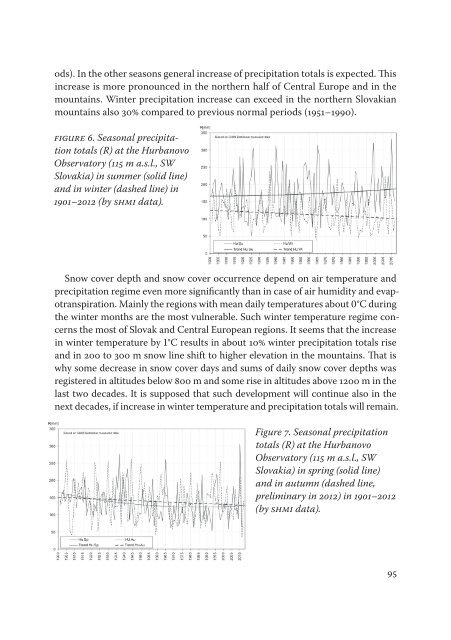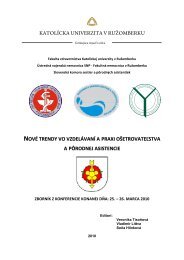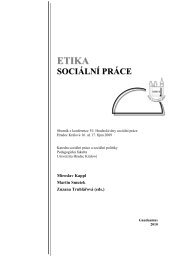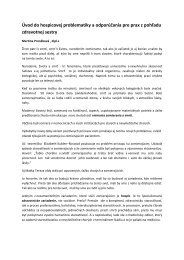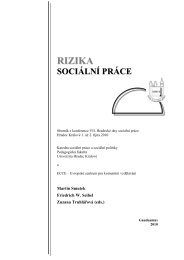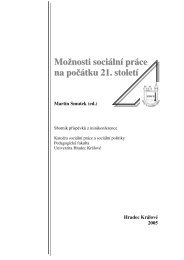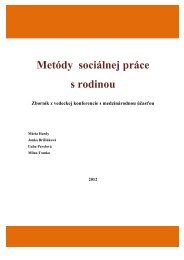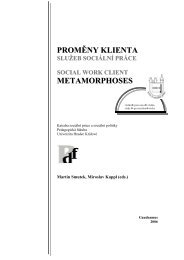Zmena klÃmy â možný dopad (nielen) na obyvateľstvo - Prohuman
Zmena klÃmy â možný dopad (nielen) na obyvateľstvo - Prohuman
Zmena klÃmy â možný dopad (nielen) na obyvateľstvo - Prohuman
You also want an ePaper? Increase the reach of your titles
YUMPU automatically turns print PDFs into web optimized ePapers that Google loves.
ods). In the other seasons general increase of precipitation totals is expected. This<br />
increase is more pronounced in the northern half of Central Europe and in the<br />
mountains. Winter precipitation increase can exceed in the northern Slovakian<br />
mountains also 30% compared to previous normal periods (1951–1990).<br />
Figure 6. Seaso<strong>na</strong>l precipitation<br />
totals (R) at the Hurbanovo<br />
Observatory (115 m a.s.l., SW<br />
Slovakia) in summer (solid line)<br />
and in winter (dashed line) in<br />
1901–2012 (by SHMI data).<br />
Snow cover depth and snow cover occurrence depend on air temperature and<br />
precipitation regime even more significantly than in case of air humidity and evapotranspiration.<br />
Mainly the regions with mean daily temperatures about 0°C during<br />
the winter months are the most vulnerable. Such winter temperature regime concerns<br />
the most of Slovak and Central European regions. It seems that the increase<br />
in winter temperature by 1°C results in about 10% winter precipitation totals rise<br />
and in 200 to 300 m snow line shift to higher elevation in the mountains. That is<br />
why some decrease in snow cover days and sums of daily snow cover depths was<br />
registered in altitudes below 800 m and some rise in altitudes above 1200 m in the<br />
last two decades. It is supposed that such development will continue also in the<br />
next decades, if increase in winter temperature and precipitation totals will remain.<br />
Figure 7. Seaso<strong>na</strong>l precipitation<br />
totals (R) at the Hurbanovo<br />
Observatory (115 m a.s.l., SW<br />
Slovakia) in spring (solid line)<br />
and in autumn (dashed line,<br />
prelimi<strong>na</strong>ry in 2012) in 1901–2012<br />
(by SHMI data).<br />
95


